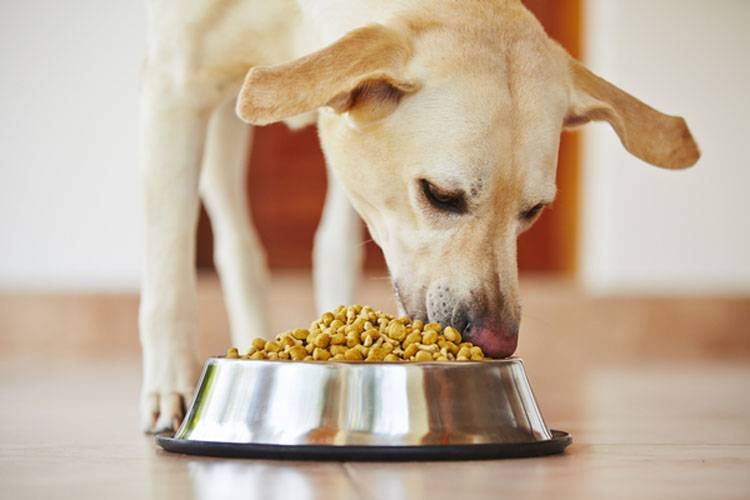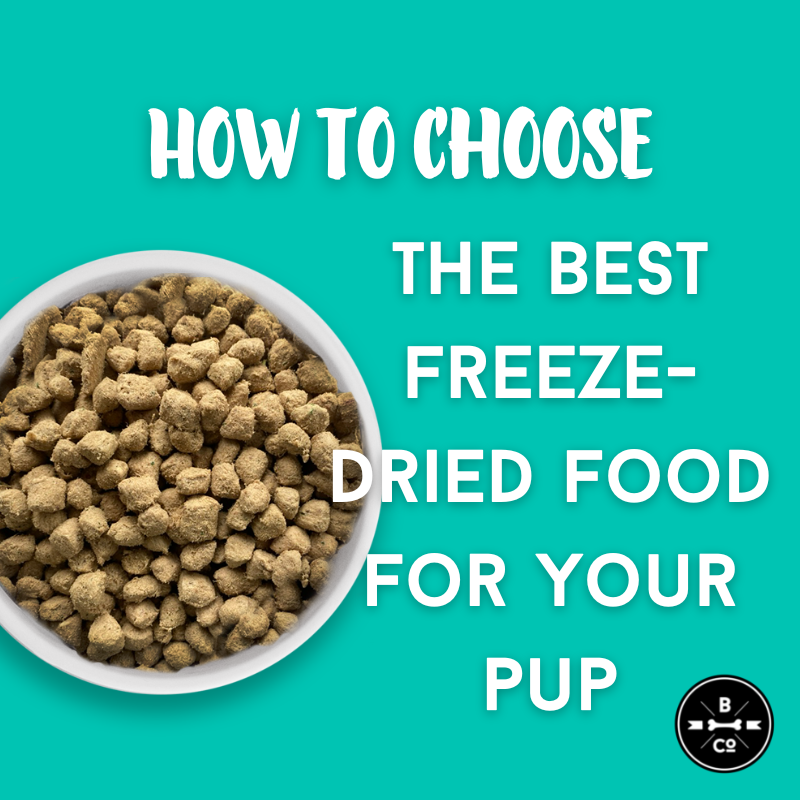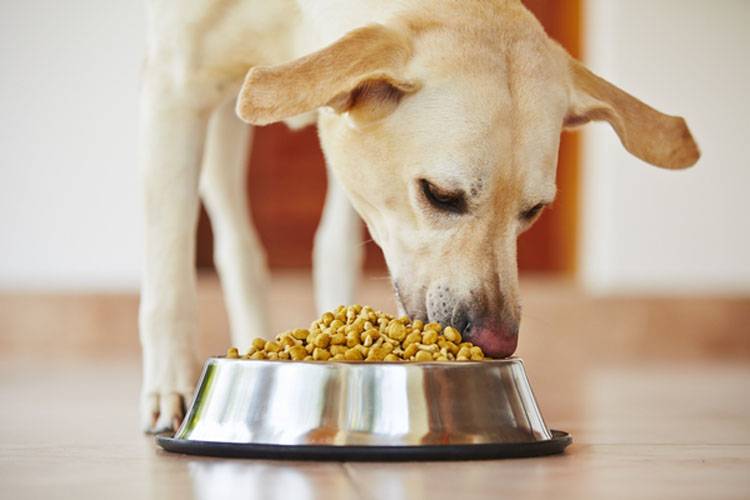As pet owners, we want nothing but the best for our beloved dogs. One of the most crucial aspects of their overall health and well-being is their diet. Choosing the right dog food is essential in ensuring that they receive all the necessary nutrients to thrive. With so many options available in the market, it can be overwhelming to select the best dog food for your furry friend. This article will guide you through the process of choosing the best dog food for your canine companion.
Factors to Consider When Choosing Dog Food

When selecting dog food, there are several factors that you should keep in mind to ensure that you make an informed decision. These include:
Age and Size of Your Dog
Just like humans, dogs have different nutritional requirements at different stages of their life. Puppies require more protein and calories for growth, while senior dogs need a lower-calorie diet to maintain their weight. Large breed dogs also have specific dietary needs compared to small breeds. Therefore, it is crucial to choose dog food that is tailored to your dog's age and size.
Nutritional Needs
Dogs require a balanced diet that provides all the essential nutrients, including proteins, carbohydrates, fats, vitamins, and minerals. The amount of each nutrient needed varies depending on the breed, age, and activity level of your dog. It is essential to check the ingredient list and nutritional information of the dog food to ensure that it meets your dog's specific nutritional needs.
Protein Sources for Dogs
Proteins are essential for dogs as they provide the necessary amino acids for muscle growth and repair. Look for dog food that lists meat as the main ingredient, such as chicken, beef, or fish. Avoid dog food that uses by-products or fillers as the primary source of protein.
Carbohydrate Sources for Dogs
Carbohydrates are a vital source of energy for dogs. However, not all carbohydrates are created equal. Avoid dog food that uses corn, wheat, or soy as the main source of carbohydrates. These ingredients can cause allergies and digestive issues in some dogs. Instead, opt for dog food that uses whole grains such as brown rice, oats, and barley.
Fat Sources for Dogs
Fats provide energy and help absorb essential vitamins for dogs. Look for dog food that uses animal-based fats, such as chicken fat or fish oil. Avoid dog food that lists "animal fat" as the ingredient, as it is a vague term and could contain low-quality fats.
Vitamins and Minerals for Dogs
Vitamins and minerals are necessary for a dog's overall health and well-being. They play a crucial role in maintaining a healthy immune system, strong bones, and shiny coat. Look for dog food that includes vitamins A, C, D, E, B-complex, as well as minerals like zinc, iron, and copper.
Food Allergies and Sensitivities
Just like humans, dogs can have food allergies and sensitivities too. If your dog shows any signs of allergies, such as skin irritation or gastrointestinal issues, it is best to consult with your veterinarian to determine the source. If your dog has a specific food allergy, make sure to avoid dog food that contains those ingredients. You can also opt for limited ingredient diets or hypoallergenic dog food that is formulated specifically for dogs with food allergies.
Type of Dog Food
There are various types of dog food available in the market, including dry kibble, wet canned food, and raw diets. Each type has its benefits and disadvantages, and it ultimately depends on your dog's preferences and needs.
Dry Kibble
Dry kibble is the most commonly used type of dog food. It is convenient to store, has a longer shelf life, and helps maintain dental health by reducing tartar buildup. However, some dogs may not prefer the texture or taste of dry kibble.
Wet Canned Food
Wet canned food has a higher moisture content compared to dry kibble, making it a great option for dogs who do not drink enough water. It also comes in a variety of flavors and textures, making it more palatable for picky eaters. However, it can be more expensive and needs to be consumed within a few days after opening.
Raw Diets
Raw diets consist of uncooked meats, vegetables, and fruits, often supplemented with vitamins and minerals. Some pet owners believe that this mimics the natural diet of dogs in the wild and is a healthier option. However, there are potential risks associated with feeding raw diets, such as bacterial contamination and nutritional imbalances. Consult with your veterinarian before switching your dog to a raw diet.
How to Read Dog Food Labels

Reading dog food labels is crucial in determining the quality and nutritional value of the food you are considering for your dog. Here are some tips on how to read dog food labels:
Look for Meat as the First Ingredient
The first ingredient listed on the label should be a high-quality source of meat, such as chicken, beef, or fish. This means that the food contains a significant amount of protein.
Check the Guaranteed Analysis
The guaranteed analysis gives you an idea of the nutrient composition of the dog food. Make sure that the protein, fat, and carbohydrate levels meet your dog's specific dietary needs.
Avoid Artificial Preservatives and Fillers
Avoid dog food that uses artificial preservatives, colors, and flavors. These ingredients provide no nutritional value and can be harmful to your dog in the long run. Also, avoid fillers such as corn, wheat, and soy, which have little nutritional benefits and can cause allergies in some dogs.
Look for AAFCO Statement
The Association of American Feed Control Officials (AAFCO) sets the standards for pet food nutrition. Look for dog food that has an AAFCO statement on the label, indicating that the food meets the minimum nutritional requirements for dogs.
Choosing the Best Dog Food for Specific Health Needs

Dogs with certain health conditions may require a special diet to manage their condition and improve their overall health. Here are some examples of specific health needs and the type of dog food that can help:
Weight Management
If your dog is overweight or obese, it is essential to choose a dog food that is formulated for weight management. These foods are lower in calories and fat, making them an ideal option for dogs needing to lose weight.
Joint Health
For dogs with joint issues such as arthritis, look for dog food that contains ingredients like glucosamine and chondroitin, which help support joint health. Foods with added omega-3 fatty acids can also have anti-inflammatory effects, relieving pain and stiffness in joints.
Digestive Issues
If your dog suffers from digestive issues such as diarrhea or constipation, consider switching to a dog food that is easily digestible. Ingredients like prebiotics and probiotics can promote healthy digestion and improve nutrient absorption.
Frequently Asked Questions (FAQs)

Q: Can I feed my dog the same food as I do?
A: No, it is not recommended to feed your dog human food as their nutritional needs are different. Some human foods can be toxic to dogs, and others may not provide the necessary nutrients for their well-being.
Q: How often should I change my dog's diet?
A: It is best to consult with your veterinarian before changing your dog's diet. In general, if your dog has no underlying health issues, it is safe to change their food every 2-3 months gradually.
Q: Are grain-free diets better for dogs?
A: Grain-free diets are not necessarily better for dogs. For dogs with no grain allergies, whole grains can provide nutritional benefits and fiber for a healthy digestive system.
Q: Should I feed my dog a vegetarian or vegan diet?
A: Dogs are omnivores and require a balanced diet that includes animal-based proteins. It is not recommended to feed them a vegetarian or vegan diet as it may lead to nutritional imbalances and health issues.
Q: How much should I feed my dog?
A: The amount of food your dog needs depends on their size, age, and activity level. Follow the feeding guidelines on the dog food label, but also consider your dog's individual needs. Consult with your veterinarian if you are unsure about the appropriate portion for your dog.
Conclusion

Choosing the best dog food for your furry friend may seem like a daunting task, but with the right information, you can make an informed decision. Consider your dog's age, size, nutritional needs, and preferences when selecting dog food. Always read the labels carefully, and consult with your veterinarian if your dog has any specific health conditions. Remember, providing your dog with a balanced and nutritious diet is crucial in ensuring their overall health and well-being.



